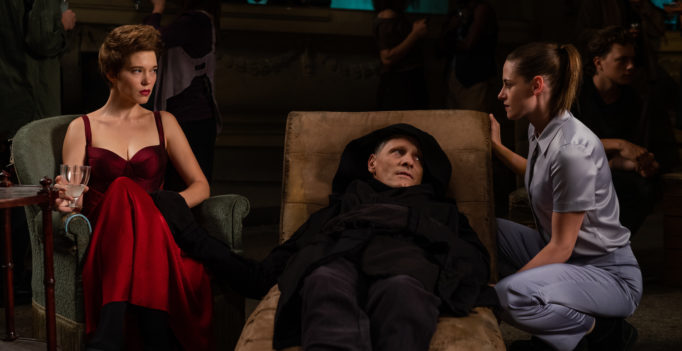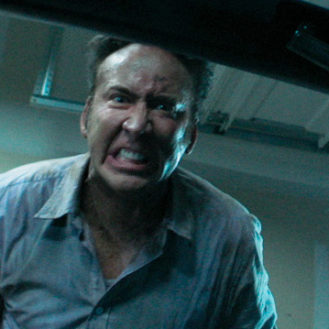As much as I would love to compare David Cronenberg’s Crimes of the Future to his earlier horrors, I’m afraid I’m unqualified because I haven’t seen enough of that catalogue. However, I can see a contrast between the Canadian’s long-awaited return to filmmaking and his other recent dramatic work such as A History of Violence, Eastern Promises, and A Dangerous Method – all of which also star Viggo Mortensen. Crimes of the Future, a gruesome sci-fi working on a much different frequency, is far more open to perverse ideas and concepts.
A desolate society has become increasingly fascinated with bodily capabilities – there are those who act on their impulses and those who are voyeurs to this morbid curiousity. Performance artists Saul and Caprice (Mortensen, The French Dispatch’s Léa Seydoux) are of the former ilk, as Caprice explores Saul’s innovative body after the ailing test subject has created unique organs. When a new project is proposed to Saul by a persistent onlooker (Sharp Stick’s Scott Speedman), the artists discover that their society is running dangerously close to being further corrupted by a disturbing God complex lurking in the shadows.
Despite some convenient factors that allow writer/director Cronenberg to cover narrative cracks with off-kilter filler (I was reminded of the hilarious Hollywood cover-up for plot holes from Thank You For Smoking: “Thank God we invented the, you know, ‘whatever device’.”), Crimes of the Future is an ingenious flick. The set and prop designs are marvellous: compelling us, disgusting us, sometimes making us laugh at how absurd they are. On top of the physical aesthetics though, Cronenberg offers thought-provoking topics. The filmmaker doesn’t settle in to a primary directive, but rather lets the provocative story open itself up to a balanced array of discussions. Artistic debates have been explored before, but I was really interested in a slight competitive debate about who is the “real” performance artist when comparing Saul’s craft to Caprice’s and vice versa. And as disturbing as they can be, I also liked the oddball visceral turn-ons that are inspired by bodily modifications (see: the Soska Sisters’ brilliant American Mary for similar topics explored in a more contemporary era). The conundrums that involve the artists having to question their own integrity made for good intellectual fodder as well, but I almost liked the morale decisions more when they were associated with the work and support of the National Organ Registry (scene-stealing roles from Don McKellar and Kristen Stewart).
Whenever I need a refresher about the importance of artistic creativity and merit, I think Crimes of the Future will be a new go-to pick for cinematic reassurance.
**********
Do You Tweet? Follow These Tweeple:
Addison Wylie: @AddisonWylie




Be the first to comment